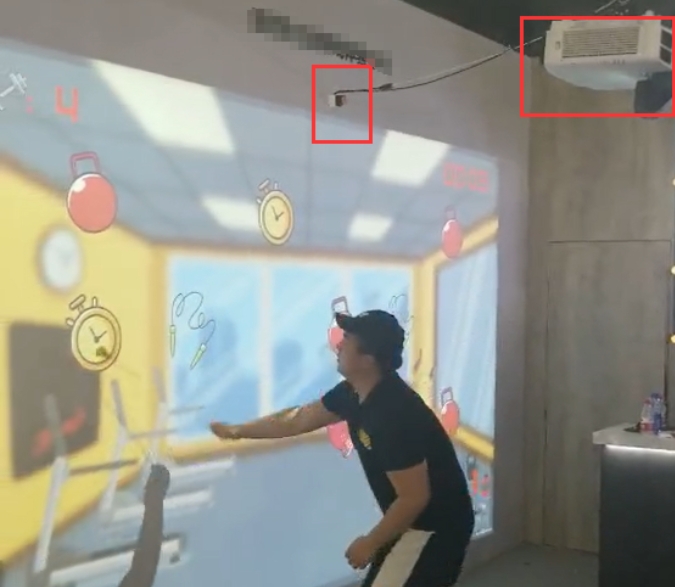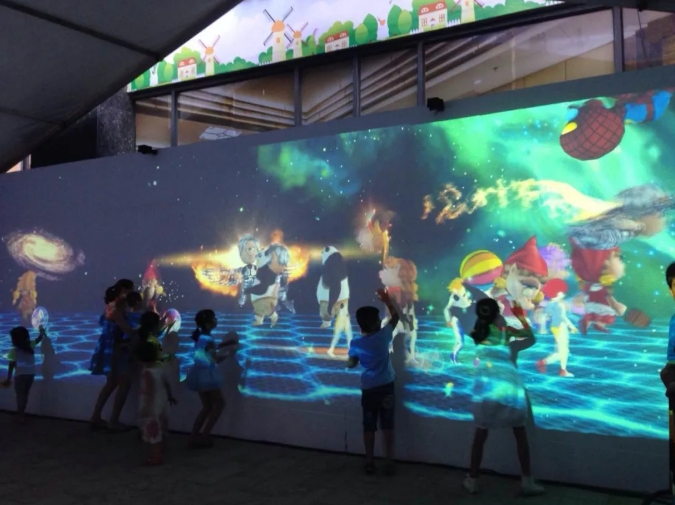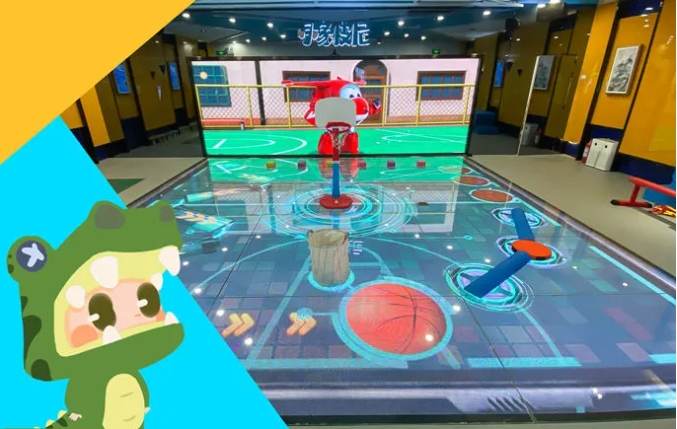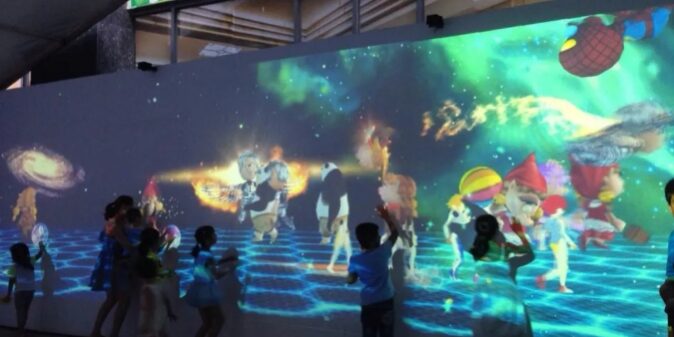In recent years, the concept of “immersive experiences” has rapidly gained popularity, especially in exhibition spaces, entertainment, and commercial applications. With advancements in technology, such as LiDAR (Light Detection and Ranging), immersive experiences have become more interactive and engaging. By leveraging LiDAR technology for multi-touch interaction, users can engage with digital content in ways that were once unimaginable. In this article, we will explore how LiDAR is revolutionizing multi-touch interaction, its applications, and how this technology is shaping the future of human-computer interaction (HCI).

What is LiDAR Multi-Touch Interaction?
Multi-touch interaction refers to the technology that enables users to interact with a system via multiple touch points simultaneously. It is widely used in devices like smartphones, tablets, and interactive screens. However, LiDAR-based multi-touch interaction takes this a step further by integrating LiDAR sensors to detect the proximity and movement of hands or fingers in a touchless manner.
LiDAR is traditionally used in mapping and autonomous vehicles, but in interactive applications, it detects motion and gestures, turning a surface like a wall or screen into a responsive interactive area. When combined with high-resolution projection systems, LiDAR-based multi-touch creates a dynamic experience where users can manipulate and engage with visual content by simply moving their hands or fingers in front of a surface.
Key Technologies Involved
- LiDAR Sensors LiDAR sensors use laser pulses to measure distances and detect objects in their environment. These sensors can track gestures, movements, and even proximity to objects. In multi-touch applications, LiDAR sensors capture data about the user’s actions, such as the location of their hands or fingers, to trigger specific responses from the system.
- Image Capture and Rendering The image capture hardware in a LiDAR-based system includes infrared sensors, which help locate and track the user’s movements. Once the motion is captured, the data is sent to the rendering server. The server processes this data and sends it to the projection system, which displays the corresponding visual feedback on the screen or wall. This allows the user to interact with digital content by performing gestures like dragging, rotating, or zooming.
- Projection Systems The projection system is integral to the immersive experience. It projects digital content onto a surface, turning static images into dynamic, interactive visuals. The system responds to user input by modifying the displayed content, creating an engaging and interactive experience.

Benefits of LiDAR Multi-Touch Interaction
1. Gesture-Based Control
LiDAR enables gesture-based interaction, where users do not need to physically touch the screen. This opens up a world of possibilities for touchless interaction. For example, users can swipe, zoom, or rotate objects in a virtual environment without ever touching a device. LiDAR sensors detect even subtle movements, ensuring a seamless and highly responsive experience.
2. Enhanced Accuracy and Precision
One of the key advantages of LiDAR over traditional infrared sensors is its precision. LiDAR sensors are capable of detecting small movements with great accuracy, which is crucial for multi-touch applications. This allows for precise interaction, even when multiple users are engaging with the system at the same time. It ensures that each touchpoint is accurately tracked, whether it’s a finger, hand, or even a body movement.
3. Multiple Touchpoints and User Interaction
LiDAR can detect multiple touchpoints simultaneously, supporting multi-user interaction. This means that more than one person can interact with the system at once, making it ideal for public spaces like museums, exhibitions, or interactive displays. Multi-user support adds another layer of engagement and collaboration, making it a perfect fit for environments that require group participation.
4. Real-Time Feedback
LiDAR sensors provide real-time tracking, ensuring that the system responds immediately to user actions. When a user gestures or moves their hand, the system updates the content instantaneously, providing visual, auditory, or even tactile feedback. This responsiveness enhances the user experience, making it feel more natural and immersive.
5. Hygiene and Safety
In the context of public spaces and shared environments, LiDAR-based multi-touch interaction offers a hygienic advantage by eliminating the need for physical contact with screens or devices. This touchless interaction reduces the risk of transmitting germs and viruses, providing a safer option for both users and operators.

Applications of LiDAR Multi-Touch Interaction
1. Interactive Exhibitions and Museums
In museums and art galleries, LiDAR-based systems are transforming how visitors interact with exhibits. For example, a user can simply wave their hand over a projected image to rotate a 3D model or zoom in on details, enriching the learning experience. This form of interaction brings exhibits to life, providing a more engaging and educational experience. Whether it’s exploring ancient artifacts or viewing scientific data, LiDAR helps make content more accessible and interactive.
2. Retail and Advertising
LiDAR-based interactive displays are revolutionizing retail and advertising by offering engaging, interactive ways to showcase products. In retail environments, customers can use gestures to browse product catalogs, see product demonstrations, or even try on virtual clothing. By integrating LiDAR technology into advertising displays, businesses can attract customers’ attention with dynamic, engaging content that responds to their actions, enhancing the shopping experience.
3. Corporate Presentations and Trade Shows
At corporate events and trade shows, LiDAR-powered interactive walls or displays can be used to engage attendees in a new and exciting way. Whether it’s exploring product features or interacting with virtual prototypes, LiDAR makes presentations more engaging and memorable. These systems allow for multi-touch interaction with 3D models, live data, and interactive videos, making corporate presentations more immersive and impactful.
4. Gaming and Entertainment
LiDAR technology is increasingly being incorporated into gaming and entertainment. Imagine a scenario where players can interact with a virtual world simply by moving their hands in front of a screen. LiDAR-based multi-touch allows players to control characters, manipulate objects, and trigger special effects without needing a traditional controller. This touchless interaction enhances immersion and provides a new level of control in gaming experiences.
5. Public Information Displays
LiDAR-based multi-touch is also being used in public information kiosks, such as those found in airports, shopping malls, or public transportation stations. Users can interact with the display to find directions, browse information, or view advertisements, all without touching the screen. The intuitive nature of the system ensures that users of all ages can engage with the content effortlessly.
How LiDAR Improves the User Experience
1. Intuitive Interaction
The ability to control and manipulate digital content using gestures or proximity makes the interaction feel natural. Users no longer need to rely on buttons or touchscreens, which can often feel cumbersome or restrictive. LiDAR offers an intuitive way to interact with content, allowing users to feel more connected to the digital environment.
2. Immersive Environments
By integrating LiDAR sensors with projection systems, users can step into immersive environments that react to their movements in real time. Whether it’s a virtual tour, a dynamic game, or an interactive learning tool, the system responds immediately to the user’s gestures, creating an engaging and unforgettable experience.
3. Customization
LiDAR-based systems can be customized to suit a wide range of applications, from museums to corporate presentations to retail spaces. The interactive content can be tailored to specific user needs, enhancing the overall effectiveness of the system.
Conclusion
The use of LiDAR technology in multi-touch interaction is not just a futuristic concept; it is already shaping the future of how we interact with digital content. By enabling gesture-based, touchless interaction with high accuracy, LiDAR-based systems are revolutionizing a variety of industries, from gaming and entertainment to corporate presentations and public information displays. As this technology continues to evolve, we can expect even more innovative and engaging experiences in the years to come. Whether you are designing interactive exhibits, launching a retail campaign, or creating the next generation of video games, LiDAR offers the tools to bring your ideas to life in a way that’s both intuitive and immersive.







